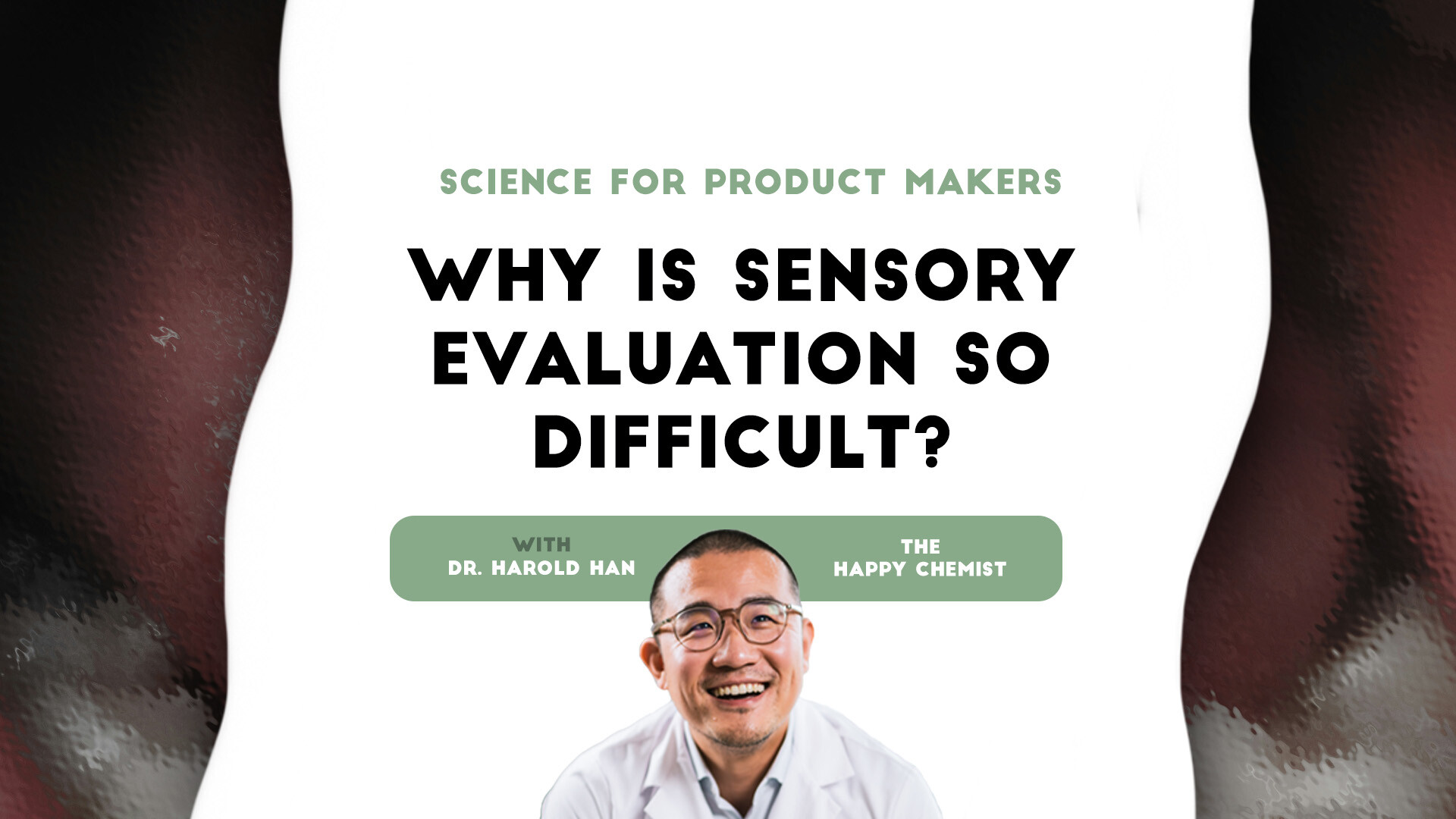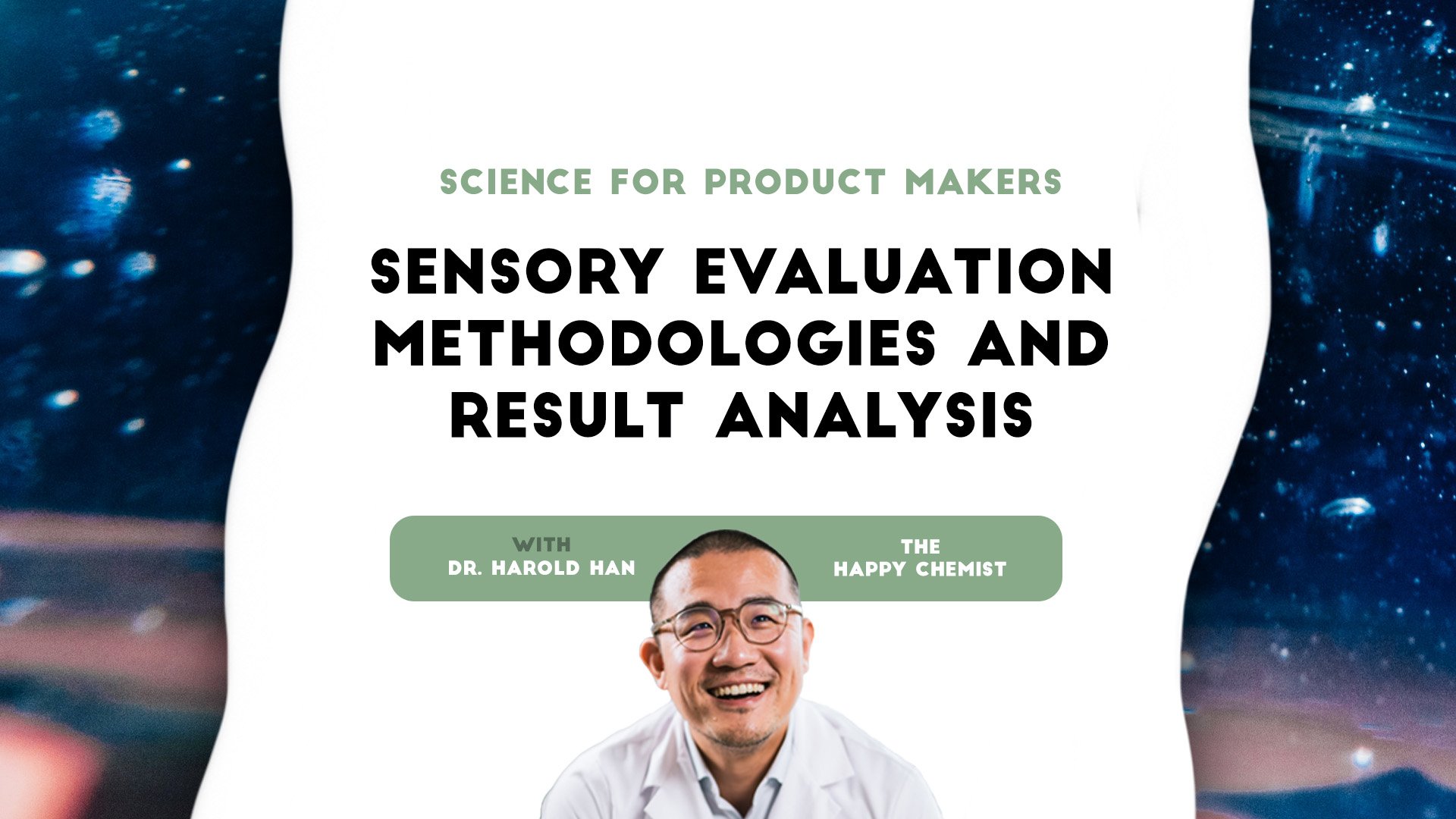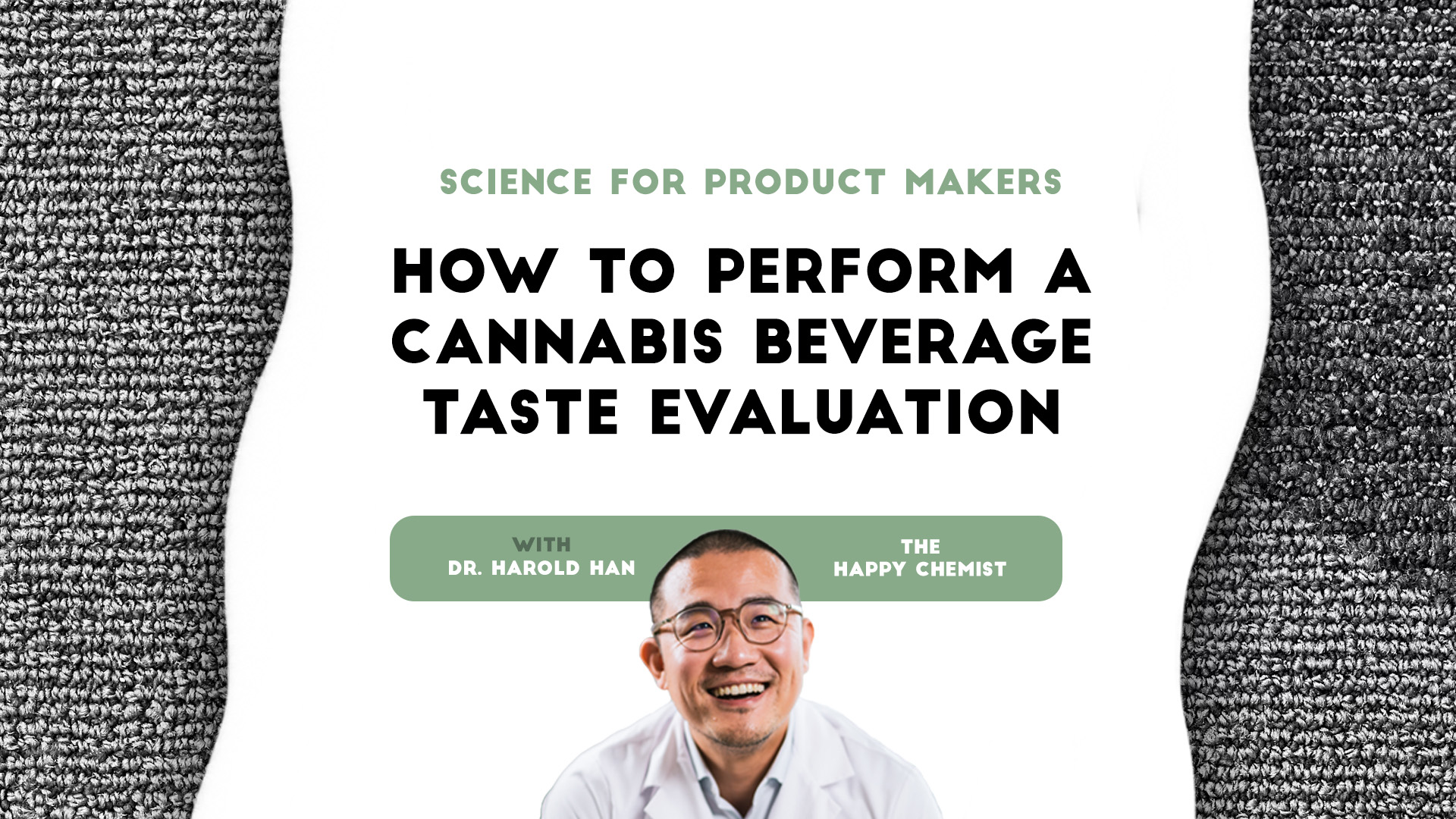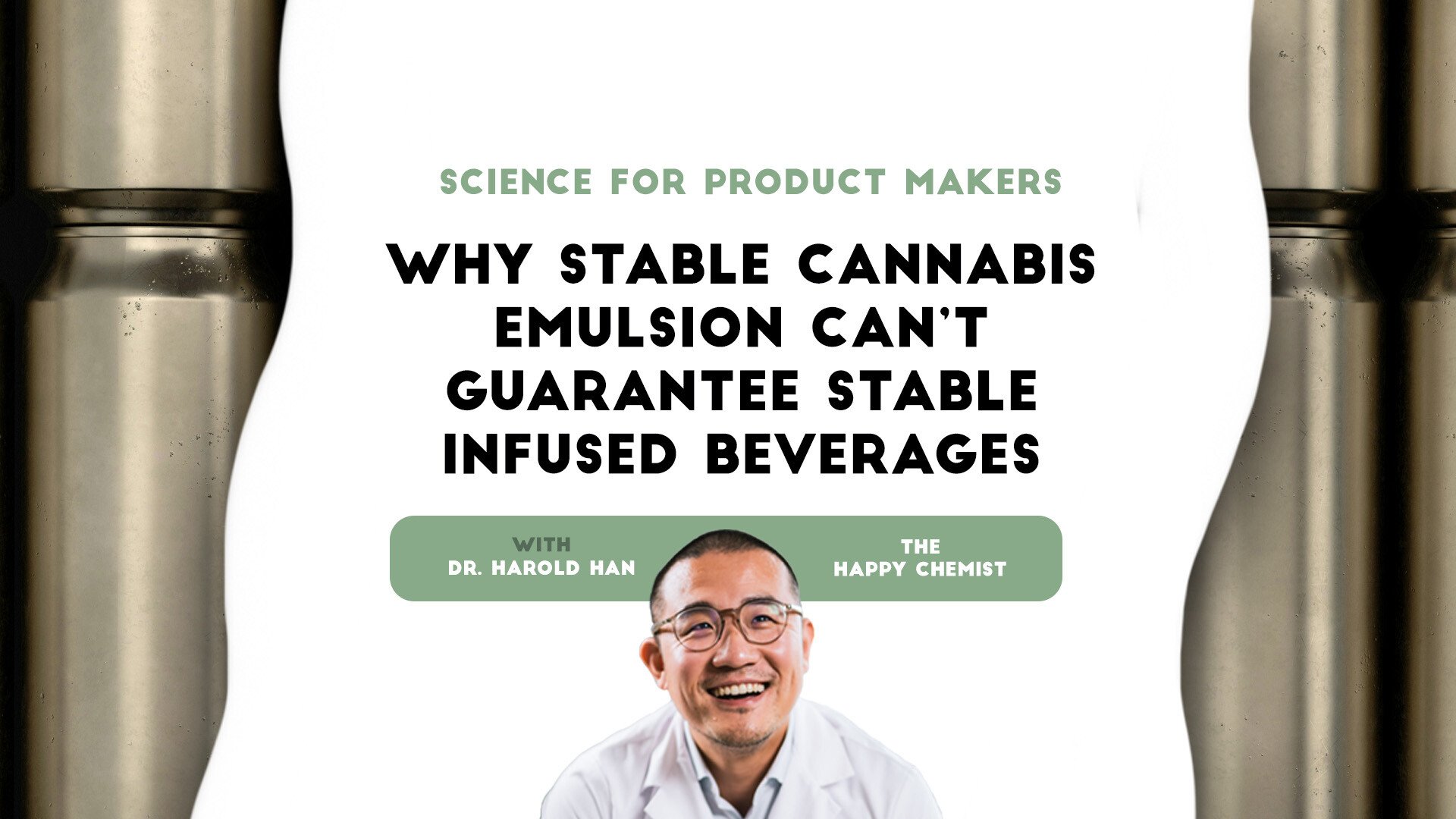Science for product makers: sensory evaluation methodologies and result analysis
This post is also published as an article on Harold's LinkedIn profile. You can read and leave comments here.
3 min read
 Dr. Harold Han - "The Happy Chemist"
:
6/28/24 8:41 PM
Dr. Harold Han - "The Happy Chemist"
:
6/28/24 8:41 PM

This post is also published as an article on Harold's LinkedIn profile. You can read and leave comments here.
For cannabis beverage brands, product taste is not only your consumer's first impression, but oftentimes it can be the determining factor for the overall product experience.
Sensory evaluation is critical since it provides answers to each step of the product development process: How good is the initial base formulation? How does cannabinoid type and potency level impact taste? Can suppliers be switched without affecting taste? Does this new batch meet sensory quality standards? How do we deal with consumer complaints about flavor? The list of questions can go on. But as important as sensory evaluation is, it can be very challenging for operators in reality. From a recent poll, people believe the subjective nature of sensory evaluation is the main culprit.

The team should have several questions already answered before even conducting the test:
Let's compare sensory testing to potency testing: a potency test utilizing HPLC offers reliable & objective data, while sensory testing leverages our taste buds, which lead to variable and subjective results.

The taste buds are sensory organs on the tongue that play a crucial role in our ability to distinguish flavors from one another. These microscopic structures contain specialized cells that respond to 5 taste stimuli: sweet, salty, sour, bitter, and umami. On average, the adult tongue has 2,000 to 8,000 taste buds. The density of taste buds is mainly determined by genetics and it varies among individuals, contributing to differences in taste perception. Around 25% of the population can be classified as “super tasters” and around 30% as “non-tasters”. Super tasters usually have 3—4 times the density of taste buds compared to non-tasters, who have low amounts of taste buds and thus perceive flavors more mildly.

This variance in tasting ability is why sensory results often conflict. When we want accurate potency data, we need to calibrate an HPLC instrument. In sensory analysis however, in order to boost data confidence and consistency, the best practice is to find and train super tasters, either on your team or from your contacts.
Supertaster strips are made using food grade chemicals with distinctive flavors and can be bought off the shelf. Serve the strip to testers and ask them what flavor / intensity they can sense. Those who cannot detect the taste can be eliminated from the pool. This is the quickest way to screen who can potentially be super tasters.
The next step is to determine which tasters have the most sensitive palates. Conduct a blind tasting, asking participants to rank the intensity of pre-made samples. We can use different levels of sodium chloride, citric acid, sucrose and caffeine to prepare water solution samples. The goal is to create slightly different levels of salt, sour, sweet and bitterness, then bring each individual to a private tasting session and let them rank each category from low to high. A supertaster should be able to discern the sensory difference. Below is a suggested starting point on concentrations. The differences in concentrations can be adjusted to increase the difficulty of the test.

If you can find supertasters on your team — great! Keep leveraging them for all future sensory evaluations since it is the best way to maintain consistency and high confidence in your results, however it’s important to understand that changes to the environment can affect super tasters’ ability to taste: smoking, stress, allergens, certain diseases (COVID) and aging can all affect tasting ability. If the palette is the analytical instrument, then periodic calibration (ranking blind samples from step 2) is suggested.
The subjective nature and wide genetic spectrum of tasting capability are the biggest challenges for sensory evaluation. To make swift and confident decisions, the best practice for cannabis beverage startups is to identify super tasters within the team and designate a “Golden Tongue” amongst them to make final decisions.
A "Golden Tongue" is a super taster who also deeply understands the brand and its vision. Many successful beverage startups have benefited by having a “Golden Tongue '' within the founding team who makes final decisions on product sensory. Even when these companies grow and hire more flavor experts, oftentimes approval from the “Golden Tongue” is needed before launching a new SKU. The advantage to this method is quick and effective decision making, but it's not without risk as the company's future roadmap will be shaped by a single opinion.
Identifying super tasters is just one of the important factors in conducting a successful sensory analysis. What else can we do to ensure quality results? Stay tuned for my next post, where I will discuss conducting a sensory evaluation in more detail.
Dr. Harold Han — the “Happy Chemist” — combines his storied background in emulsion chemistry and science with curiosity and fascination in the rapidly growing cannabis industry. Developing nano and micro emulsions his entire career, Harold holds a Ph.D in Surface Chemistry from NYU and is the holder of multiple patents for his inventions in emulsion chemistry.
As the Chief Science Officer at Vertosa, Harold spearheads the company’s development of industry-leading and customized active ingredients for infused product makers, offering pre-suspended aqueous solutions to create incredibly homogenous and stable products while maximizing bioavailability, clarity, and taste.
To learn more about the science of cannabis, make sure to follow Harold on LinkedIn and check out his Happy Chemist videos.

This post is also published as an article on Harold's LinkedIn profile. You can read and leave comments here.

This post is also published as an article on Harold's LinkedIn profile. You can read and leave comments here.

Last week I asked my followers what they think is the most important factor for cannabis beverage potency stability. Most people selected “infusion...